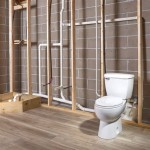Sump Pump System For Basement
A sump pump system is a crucial investment for any homeowner with a basement. It acts as the last line of defense against water damage, preventing flooding and protecting your belongings. Understanding how a sump pump system works and its key components is essential for ensuring its effectiveness.
A sump pump is a submersible pump located in a sump basin, a pit dug in the lowest part of your basement. When water accumulates in the basin, the pump activates, pumping the water out and away from your home through a discharge pipe.
Components of a Sump Pump System
- Sump Basin: A pit dug in the basement floor to collect water.
- Sump Pump: A submersible pump that pumps water out of the basin.
- Discharge Pipe: A pipe that carries water away from the home.
- Check Valve: A valve that prevents water from flowing back into the sump basin.
- Battery Backup: An optional feature that provides power to the sump pump in case of a power outage.
Types of Sump Pumps
There are two main types of sump pumps:- Pedestal Sump Pump: The motor is located on a pedestal above the basin, making it easy to access for maintenance.
- Submersible Sump Pump: The motor is submerged in the water, making it less noisy but more difficult to maintain.
Choosing the Right Sump Pump
When selecting a sump pump, consider the following factors:- Horsepower (HP): Measured in horsepower, it determines the pump's pumping capacity.
- Flow Rate: Measured in gallons per minute (GPM), it indicates how much water the pump can move.
- Discharge Head: The vertical distance the pump can lift water.
Installation and Maintenance
Proper installation and maintenance are crucial for the effectiveness of a sump pump system. Ensure the sump pump is installed in the lowest point of the basement and is connected to a discharge pipe that slopes away from the house. Regular maintenance includes:- Testing the Pump: Pour water into the basin and observe if the pump turns on and pumps out the water.
- Cleaning the Basin: Remove any debris or sediment that may obstruct the pump's operation.
- Replacing the Battery: For battery backup systems, ensure the battery is fully charged and replace it every 2-3 years.
Benefits of a Sump Pump System
Installing a sump pump system offers several benefits:- Prevents Flooding: Pumps water away from the basement, preventing flood damage.
- Protects Belongings: Keeps belongings dry and prevents mold and mildew growth.
- Increases Home Value: Adds value to your home by reducing the risk of water damage.
Conclusion
A sump pump system is an essential investment for protecting your basement from water damage. By understanding its components, selecting the right pump, and maintaining it properly, you can ensure the system is working effectively and safeguarding your home against flooding.
What Is A Sump Pump Peel Pumps Explain It Or Sell And Install Them

Basement Sump Pumps Zoeller Pump Company

Basement Sump Pumps Installation In Overland Park Kc Waterproofing

Basement Sump Pump Installation Charlotte Nc

Diy Sump Pump Install Your Own Smd Fluid Controls

Sump Pump Installation In Pa De Dry Tech Waterproofing Solutions

Sump Pump Features Parts Basement Systems

Diy Sump Pump Install Your Own Smd Fluid Controls

Backup Sump Pump Systems Waterproof Magazine

What Is A Sump Pump How Do They Work Learn More
See Also








